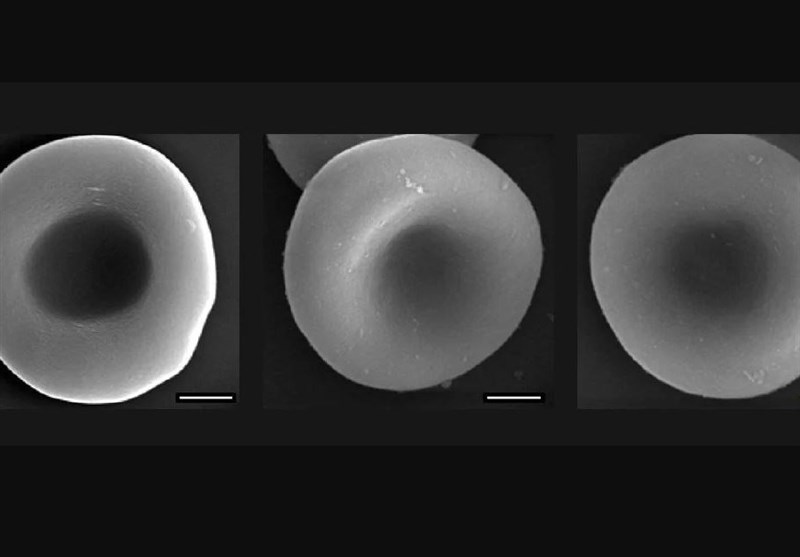Scientists Create Artificial Red Blood Cells
TEHRAN (Tasnim) – Researchers found a new way to mimic the blood cells that carry oxygen.
By combining biological material with lab-grown polymers, an international team of bioengineers has developed what could be thought of as a Terminator red cell - one more than capable of matching the talents of what's already in our veins, ScienceAlert reported.
Not only can this microscopic cyborg squeeze through the nooks and crannies of a vascular system with its usual hemoglobin, it can be modified to deliver tumor-killing medications, carry biosensors, and even be studded with tiny magnets for the ultimate in remote guidance.
If you're going to attempt to reconfigure any cell in the human body, you really can't go past the red blood cell (RBC). One of the few cells that lack a nucleus, the red cell has a relative simplicity that makes it an attractive target for engineers to build upon.
What's more, our dependence on huge amounts of clean, freshly donated products to replace blood lost through trauma puts a high demand on finding a suitable substitute.
Hence, there are several synthetic RBCs already in development. Many rely on scavenging key materials such as hemoglobin from human or animal donors and repackaging them into benign particles that are unlikely to trigger an immune response.
Some of the avenues being explored are a little more adventurous, going as far as creating sound-powered particles that can carry toxic species of highly reactive oxygen through the vascular system to assassinate cancerous tissues.
"Inspired by the above pioneering studies wherein synthetic constructs were created that achieved one or several key features of native RBCs, we endeavored to create a modular rebuilt RBC (RRBC) mimic that possessed the complete combined features of native RBCs," the researchers write in their report.
That means their bionic mimics had to be an appropriate size, shape, and flexibility to make it through the body's narrowest vessels; remain intact long enough to be useful; and still carry a suitable amount of oxygen.
Taking it even further, the team figured they'd make their tiny units modular, allowing them to swap in and out various features that helped the cells carry drugs or hone in on a destination.
To achieve their goal, they started by coating donated blood cells in a layer of silica, which was then painted with polymers of different charges.
Once the silica and cell guts were scraped away, the remaining polymer membrane could itself be covered in a skin made from red blood cells.
The result is an empty biconcave shell that can be packed with whatever biochemical machinery your heart desires, while still passing for a garden variety, oxygen-hauling red blood cell.
A battery of tests using lab equipment and animals showed the bionic blood cells lived up to expectations. Four weeks after being injected into mice, there were no signs of adverse effects, boding well for the safety of these synthetic cells.
Clearly there's a long way to go before we'll see any therapies based on artificial blood cells. Not only will we need plenty of testing to check if any cargo they carry can be released, the whole manufacturing process needs to be shown to be scalable.
But with so much research focused on building a better blood cell, there's little doubt we'll be seeing more in this field soon.
Turning our body's own cells into tiny murderous robots to attack wayward tissues and infections seems to be a popular strategy for bioengineers. Time will tell if it's a winning formula.
Be assured, we'll be back if it is.






